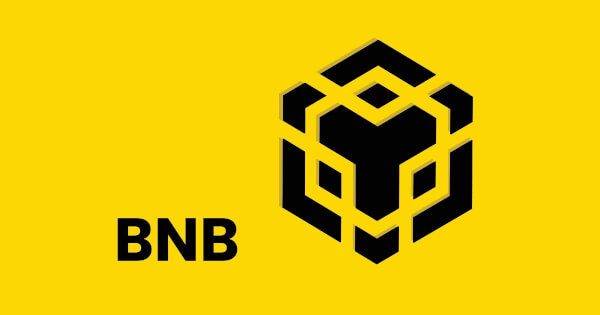Peter Zhang
Sep 09, 2024 09:30
Explore the transformation of Bitcoin within the DeFi space through layer-2 solutions, Taproot, and BTCB on BNB Chain.

Bitcoin, often seen as the original digital asset, is transitioning beyond its initial role as a value store. While the fundamental aspects of decentralization, security, and stability remain, Bitcoin is beginning to carve its niche within decentralized finance (DeFi), as reported by BNB Chain Blog.
This new trajectory aims to unlock Bitcoin’s capabilities, making it more functional and beneficial for investors, developers, and institutions alike. The focus has shifted from whether Bitcoin will engage in DeFi to how significantly it will influence its future.
What is Bitcoin DeFi (BTCFi)?
Bitcoin DeFi signifies the integration of decentralized finance applications with the Bitcoin blockchain. DeFi leverages blockchain technology and smart contracts to deliver financial services without needing traditional intermediaries, such as banks or brokers. Instead, DeFi platforms function through autonomous protocols encoded on blockchain networks.
While Ethereum has long been the leader in the DeFi arena, Bitcoin is now standing out as a strong base for decentralized financial applications. This progress is propelled by layer-2 solutions and sidechains, which enhance Bitcoin’s functionalities beyond its base layer, facilitating smart contracts, decentralized applications (dApps), and various DeFi features.
Behind The Scenes – How Taproot Facilitates BTCFi
Activated in November 2021, Taproot broadened Bitcoin’s capabilities by enhancing privacy, efficiency, and, most importantly, programmability. Before Taproot, Bitcoin faced limitations in its smart contract functionalities, hindering its ability to support more sophisticated DeFi applications. Here’s how Taproot paved the way for Bitcoin DeFi:
- Improved Privacy and Efficiency: Taproot introduced Schnorr signatures, allowing multiple digital signatures to be combined into one. This innovation decreased the data size needed for complex transactions, resulting in lower costs.
- Advanced Smart Contracts: Prior to Taproot, Bitcoin’s scripting language was restricted in managing intricate smart contracts. The Taproot update allows for greater flexibility by enabling the coding of more complex conditions into transactions. This opens avenues for building decentralized exchanges (DEXs), lending protocols, and automated market makers (AMMs) on Bitcoin via layer-2 solutions.
- Enhanced Scalability: Taproot optimizes data storage on the blockchain, increasing Bitcoin’s block efficiency. This enhancement is crucial for executing smart contracts and DeFi applications without overwhelming the network, facilitating a higher number of transactions with less congestion.
Additional innovations, like wrapped tokens (such as Wrapped Bitcoin or WBTC) and cross-chain bridges, promote DeFi engagement by rendering Bitcoin interoperable with other blockchains, including Ethereum, while preserving its security on the Bitcoin blockchain.
Bitcoin DeFi Use Cases
Borrowing and Lending: Bitcoin DeFi platforms built on Bitcoin layers allow users to engage in decentralized borrowing and lending. Lenders can earn interest on idle Bitcoin, while borrowers can access loans without intermediaries, often using their Bitcoin as collateral.
Atomic Swaps: Bitcoin DeFi supports cross-chain atomic swaps, enabling users to exchange assets across different blockchains without intermediaries. This promotes broader access to decentralized markets and platforms on other chains while maintaining Bitcoin’s trust and security advantages.
Decentralized Exchanges (DEXs): DEXs based on Bitcoin allow for direct trades of cryptocurrencies without reliance on a centralized entity. Typically built on layer-2 solutions, they enable Bitcoin to operate in a peer-to-peer financial market.
Stablecoins and Asset Issuance: Bitcoin DeFi fosters the creation of stablecoins and other digital assets, such as tokenized Bitcoin and NFTs. These assets can be issued and traded within decentralized applications, presenting new opportunities for Bitcoin holders to engage in financial markets while ensuring the security of the Bitcoin blockchain.
Bitcoin DeFi on BNB Chain
BTCB, the tokenized version of BTC on BNB Chain, allows Bitcoin holders to tap into the vast BNB Chain ecosystem without needing to liquidate their bitcoins.
BTCB is created by wrapping Bitcoin via a 1:1 pegging mechanism, ensuring that each BTCB corresponds to a securely held amount of Bitcoin by Binance. This enables Bitcoin to join the expansive DeFi space, allowing holders to utilize services like lending, borrowing, and yield farming on BNB Chain, which offers quicker transactions and reduced fees compared to Bitcoin’s native network.
The integration of BTCB with BNB Chain also mitigates security concerns through Binance’s custodial model, where Bitcoin reserves are stored in secure multi-signature cold storage wallets. Binance’s Proof of Reserves system offers transparency, enabling users to confirm that every circulating BTCB token is fully backed by actual Bitcoin.
This blend of trust, security, and access to DeFi services positions BTCB as a vital conduit for Bitcoin holders to engage with the rapidly evolving decentralized finance ecosystem on the BNB Chain, further boosting the liquidity and utility of their BTC assets.
The Future of Bitcoin DeFi
Bitcoin’s essential characteristics—robust security, decentralization, and censorship resistance—create a solid groundwork for DeFi applications.
As institutional interest in digital assets escalates, Bitcoin’s growing acceptance under regulations adds another layer of validation, especially due to its classification as a commodity in the U.S. This positions Bitcoin as a strong player for institutions aiming to engage with decentralized financial applications compliantly.
For BNB Chain, integrating Bitcoin DeFi aligns significantly with its goal of onboarding the next billion users into web3. The mainstream acceptance of Bitcoin combined with the extensive utility offered by BNB Chain could represent a perfect synergy.
Image source: Shutterstock








